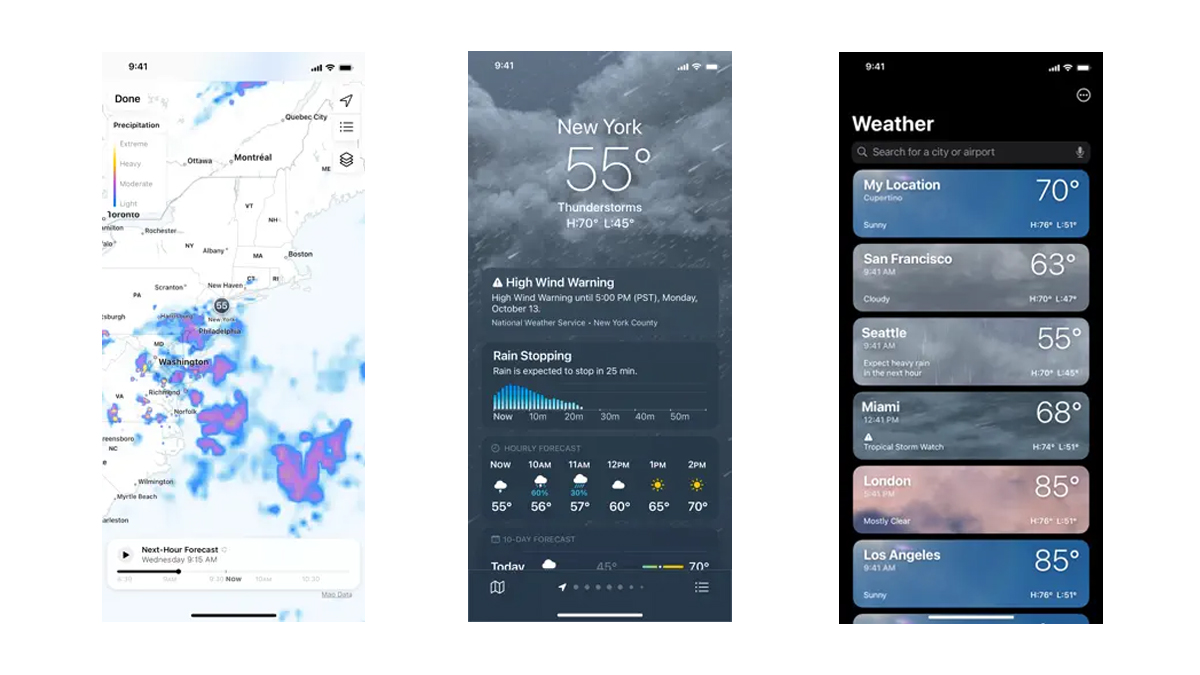Affiliate links on Android Authority may earn us a commission. Learn more.
iPhone Weather app not working? Here's how you can try to fix it
Published onJanuary 4, 2024
iPhone owners tend to rely on the stock Weather app like nothing else. Whereas it’s easy to ignore apps like TikTok, Instagram, or even Gmail in the morning, you absolute need to know whether it’ll be hot or cold when you step out the door, and whether you’ll be drenched by rain or sink in a foot of snow. If the Weather app is breaking for some reason, here’s how you can fix it.
JUMP TO KEY SECTIONS
Why is the Weather app not working on my iPhone?

This usually boils down to trouble with your internet connection, or else background app refresh failing to occur. iOS is a little less “real-time” than Android or Windows, to overly simplify things, so iPhone (and iPad) apps can briefly get stuck with outdated data, or have trouble fetching it in the first place.
There are other possibilities. The app is highly dependent on iOS Location Services, so if there’s a problem with them, Weather data will fail. And of course iOS itself can sometimes be plagued by bugs, although the Weather app has been largely solid for years.
How to fix the iPhone Weather app
You’ve got a variety of options available, but it’s best to run through these troubleshooting steps one-by-one to help diagnose what’s going on. We’ve saved the more complicated and/or time-consuming options for last. Thankfully, most people will never need those.
Let’s jump into it:
- Improve your Wi-Fi or cellular connection. Naturally, there’s no way for the Weather app to fetch data if it doesn’t have a decent pipe to the internet. Be sure you’ve got a strong Wi-Fi or 4G/5G cellular signal. If you don’t, try switching from one connection method to the other when possible. Otherwise you may have to wait until you’ve relocated somewhere with better reception.
- Force-close the app and reopen it. It’s possible that there’s a temporary glitch that can be solved by giving the app a fresh start. If nothing else, this forces Weather to fetch the latest data again, and you may have better luck the second time around.
- Check Apple’s server status. While Apple doesn’t have its own weather monitoring stations or anything, it still needs dedicated infrastructure to push info to the Weather app. Scroll to the bottom of Apple’s system status page to see whether Weather services are operating normally. If they’re not, you’ll just have to be patient while technicians sort things out.
- Make sure Location Services are enabled. Some people are loathe to grant their iPhone any tracking capabilities, but there’s no way around them with Weather — it needs to know where you are to show you local conditions. Go to Settings > Privacy and Security > Location Services and make sure the Location Services toggle is switched on.
- Make sure the app has access to location data. Weather still needs permission to access Location Services, so head to Settings > Weather and set Location to Always, or at least While Using the App or Widgets. The former is preferable, especially if you want time-sensitive notifications. In fact it’s a good idea to toggle on Precise Location too so you get Dark Sky-style hyperlocal forecasts — letting you know if it’s raining in your neighborhood, for instance, and not just the city in general. Back at the main Weather menu, check that the Cellular Data toggle is on.
- Confirm that Background App Refresh is active, and disable Low Power Mode. It might seem trivial at first, but if background refresh is disabled, Weather can’t fetch any data until you open it. Navigate to Settings > General > Background App Refresh and choose Wi-Fi and Cellular Data. If Low Power Mode is on and you don’t need it, disable it by tapping the yellow battery icon in Control Center or going to Settings > Battery. The mode limits background sync, which could impact Weather.
- Scan for iOS updates. Although you can’t update the iPhone’s Weather app directly, Apple does sometimes make fixes or upgrades to the app via iOS releases. To update your iPhone, go to Settings > General > Software Update. Assuming a new version is available, make sure your iPhone is backed up, well-charged, and connected to Wi-Fi before you begin. Set aside 15 to 30 minutes or more as well. The download will probably take a while, and once installation is underway, your iPhone will be temporarily out of commission. You may want to enable Automatic Updates, which will update iOS whenever your iPhone is locked, charging, and connected to Wi-Fi. Usually that translates to overnight.
- Delete the app and reinstall it. Ironically, while you can’t update Weather separately, you can delete it from your iPhone and reinstall it via the App Store. Tap and hold its icon, choose Remove App from the pop-up menu, then Delete App. To get the app back, open the App Store, search for Weather, then tap the cloud icon to re-download it. You’ll probably have to relocate the app on your homescreen and/or re-add any Weather widgets you had active.